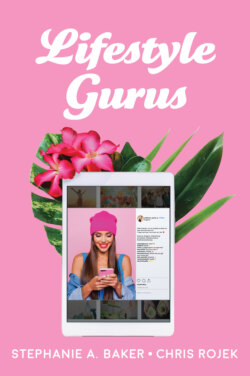Читать книгу Lifestyle Gurus - Chris Rojek - Страница 8
The Generalised Other and the Looking-Glass Self
ОглавлениеThe rise of lifestyle gurus as a component in the lives of ordinary people reflects a change in the ratio of inter-personal relations in society. For over a century, sociologists have studied how spatially segregated relationships influence self-formation. In doing so they have devised a variety of concepts to investigate and clarify the issue. For example, George Herbert Mead (1934) developed the concept of the ‘Generalised Other’ to refer to the assembly of roles and attitudes of others that provide role models of behaviour. Integral to the concept is the nuance that this assembly includes ‘Significant Others’ – those who play a major role in providing direct and indirect advice and guidance. They may take the form of family relations, friends, artists, scientists, politicians, religious leaders and other types of celebrity, whose example is internalised and pursued as a lodestar of personal well-being. Lifestyle gurus are unequivocally ‘significant others’ for their subscribers and followers. Earlier, Charles Horton Cooley (1902) had already introduced the famous concept of the ‘Looking-Glass Self’. The term refers to the construction of a self-image through the reading of how we imagine ourselves to appear to others, based on their reactions to our behaviour. Our judgement of what motivates their reactions, and the feelings of pride or shame that result, either reinforce or undermine our self-image. The result is a social self based on co-presence, imagination and reflection: ‘each to each a looking-glass reflects the other that doth pass’ (Cooley 1902: 93). While Mead included indirect relations in the formation of the self, for the greater part Cooley concentrates on the direct, inter-personal relationships that individuals have with others. Mead was a great advocate of the value of Cooley’s social psychology. As he notes approvingly, Cooley’s definition of society is ‘the contact and reciprocal influence of certain ideas named “I” … I do not see how anyone can hold that we know persons directly except as imaginative ideas in the mind’ (Mead 1930: 694). Not surprisingly, Mead’s view of the Generalised Other echoes the basic tenets of Cooley’s concept of the Looking-Glass Self. It holds that one has an idea of oneself through interaction with others and the perceived impressions of others that one attributes to them. At the heart of the self is self-reflectivity and self-feeling. However, the content of this private, inner reserve is largely a product of the observable emotional, rational and imaginary relationships that one forges with others.
Mead and Cooley wrote before the age of modern mass communications. It is generally accepted that the rise of modern mass communications, particularly television, has altered the ratio between the influence of direct and indirect relationships in the construction of self-feeling and self-knowledge. A key concept here is ‘para-social relationships’. Coined at the dawn of the television age, the term refers to the affective and imaginary relationships that audiences form with figures transmitted to them through the media of film and television (Horton and Wohl 1956). On-screen Others became significant affective resources for modifying the Looking-Glass Self. These para-social relationships were understood to challenge the primacy of kith and kin networks, especially in the lives of vulnerable and isolated people (Horton and Wohl 1956). In general, the discussion accepted that it was the fate of para-social relationships to loom larger in the field of interpersonal contact. Horton and Wohl did not speculate upon the form and content of imaginary and fantasy relationships in the para-social field. However, it is clear that these matters are integral to the concept.
Today, the ubiquity of digital technologies in the West means that the concept of para-social relationships needs to be radically recast. Horton and Wohl took it for granted that para-social transactions are located within the organised system of media transmission. In contrast, online transactions in social media are conducted outside of the system. Emotionally speaking, the internet has enabled vlogging sites, political platforms, chat rooms and crowdsourcing, in which interaction is founded upon an alternative sense of complicity rather than obedience to hierarchy. Transactions on social media sites, such as Facebook, Snapchat, Twitter, Instagram, carry the ring of authentic co-existence, because they are essentially understood to be beyond the control of corporations and the other media giants (although, as discussed in Chapter 2, commercial and corporate hierarchies persist on these platforms). Psychologically speaking, to dip into these conduits of data exchange is ultimately to swim free of the transmission belts of organised media culture and its corporate paymasters. Some commentators refer to an increasing ratio of ‘micro-celebrities’ (Senft 2008; Marwick 2013) or ‘influencers’ (Trammell and Keshelashvili 2005; Gillin 2008) in the texture of online life with others. If you feel that your parents and siblings are not listening to you, or your friends fail to understand your point of view, there are now forums, chat-rooms, blogs and social media sites organised around what we refer to categorically as online awareness agents, with whom relations of intimacy and complicity can, in theory, evolve and lead to sustaining affective balances of acceptance, approval, social impact and self-validation. Lifestyle gurus are part of this general upheaval in the dynamics of para-social relationships. They constitute new Significant Others in the lives of ordinary people. Their raison d’etre as accessible, non-hierarchical, plain-speaking sources of advice and guidance about life issues represents a genuine challenge to the knowledge, hegemony and status of professionals. In creating new Looking-Glass Selves for the modern world they offer new imaginary standards and relationships for bringing out the best in oneself.
